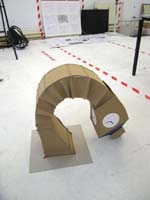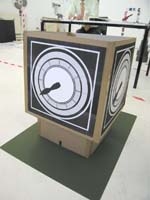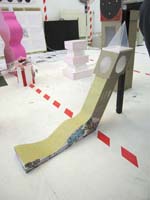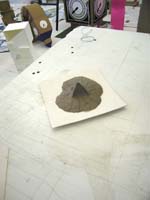Here are some of the models that students at the AA summer school have made – reimagining Big Ben … its at an interim stage in the project, and they should be finished by friday for a presentation to a high powered jury.










This from Charlie Tims / Demos about the relationship of the project to an new idea of democracy.
Quick-Space Slow-Time / Democracy / Big Ben
Big Ben is about time but it’s also about democracy.
But just as the clock recently stopped on the tower, so too did it stop on parliament and our political institutions
People don’t identify with political parties as they once did and as a result people don’t trust them and they don’t vote for them either; at the last election, for the first time the winner was non-voting; 37% of people didn’t bother. Of those that did vote most did it out of duty rather than belief in the systems and individuals they were voting for.
But this isn’t all about apathy – our democracy isn’t dead – it’s just we don’t tend to think much of our political parties anymore. Most of us have viewpoints on issues, but rather than expressing them through voting we express them through our choices and decisions, how we behave towards others and the organisations that we are members of. The democracy of everyday life; the democracy of Piccadilly, canary wharf, the south bank and china town.
We don’t so much as ask for our politics to be represented by others in our democracy, as we actively live and express them in our everyday lives. We are almost building an imaginary political party for ourselves everyday – but not one you can vote for in a ballot box.
So, just as we interpret time in individual ways, so too do we now interpret democracy in our own ways too; they’re inseparable. The deep-hanging-out exercise showed how people live their lives in different times, but it also showed different ways that people were participating in the public life and the small time democracy of their cities.
Big Ben represents old understandings of how we understand time and democracy. How could we redesign big Ben in a way that could heal the rift between how people’s everyday lives our lived and an outdated political system but still maintain the spirit of democracy.
Would it have to be more functional and less emblematic? How could it take on a new role if it was repositioned in Canary Wharf, Piccadilly, China Town or the South Bank? What would it be used for?
Different Kinds of Everyday Democracy
www.pledgebank.co.uk
http://www.43things.com/
http://www.mediarights.org/
http://www.greenpeace.org.uk/
www.amazon.co.uk
]]>
